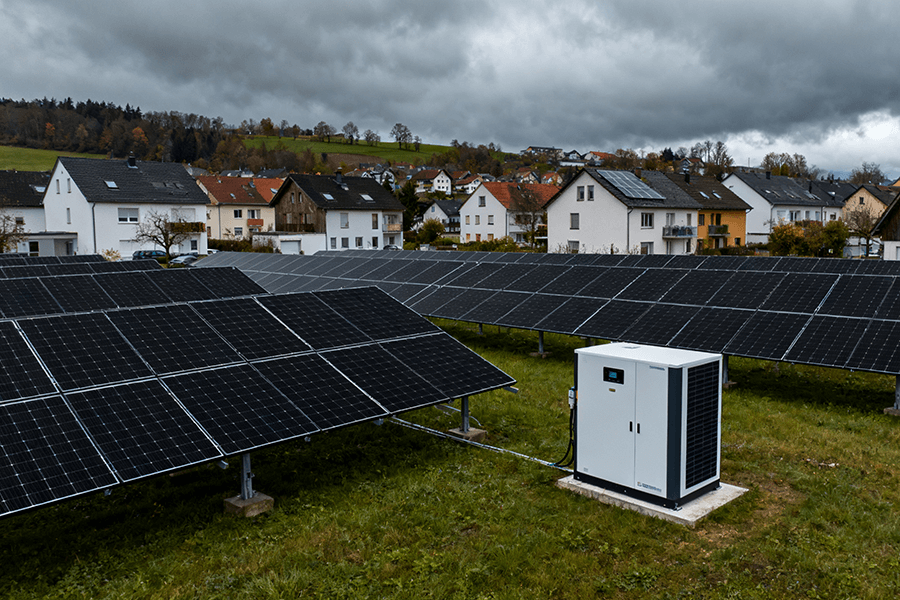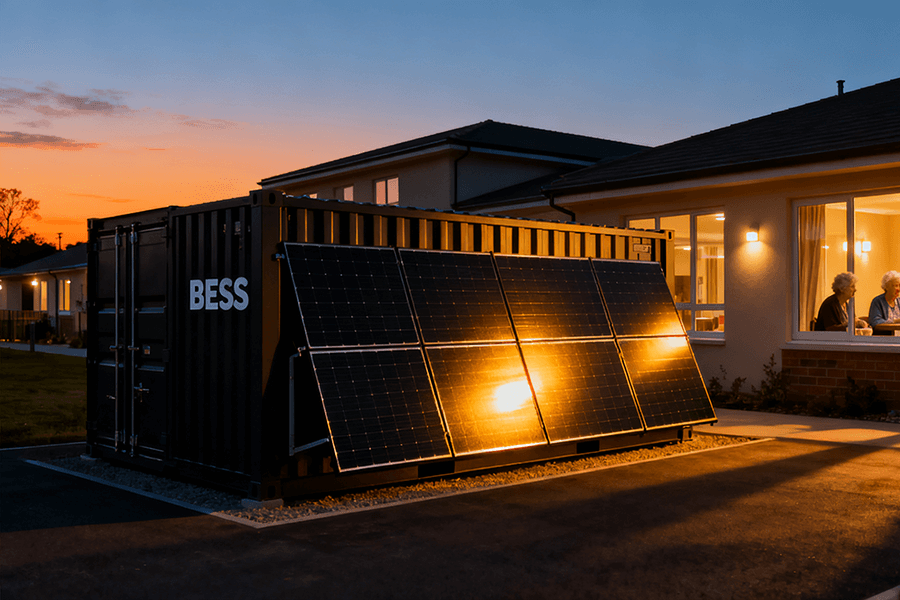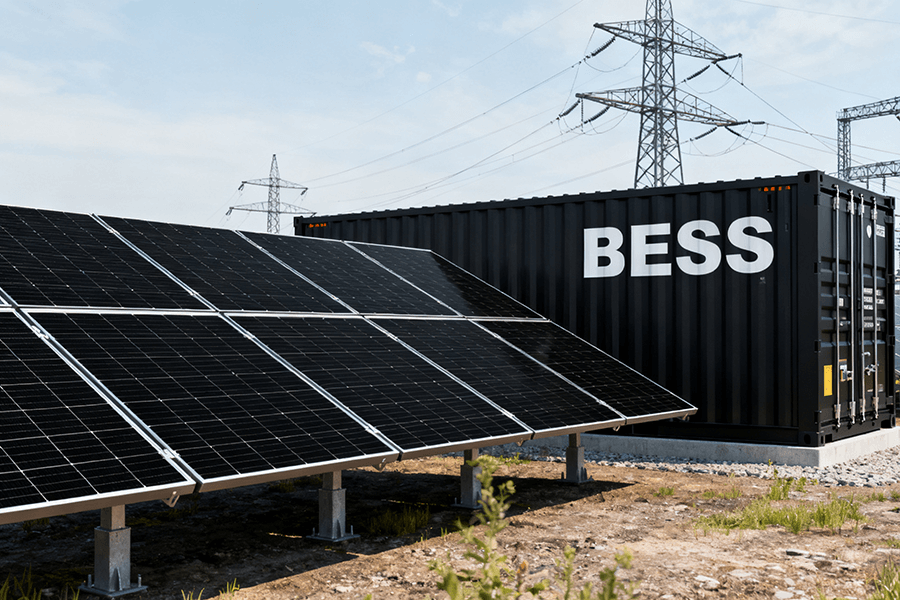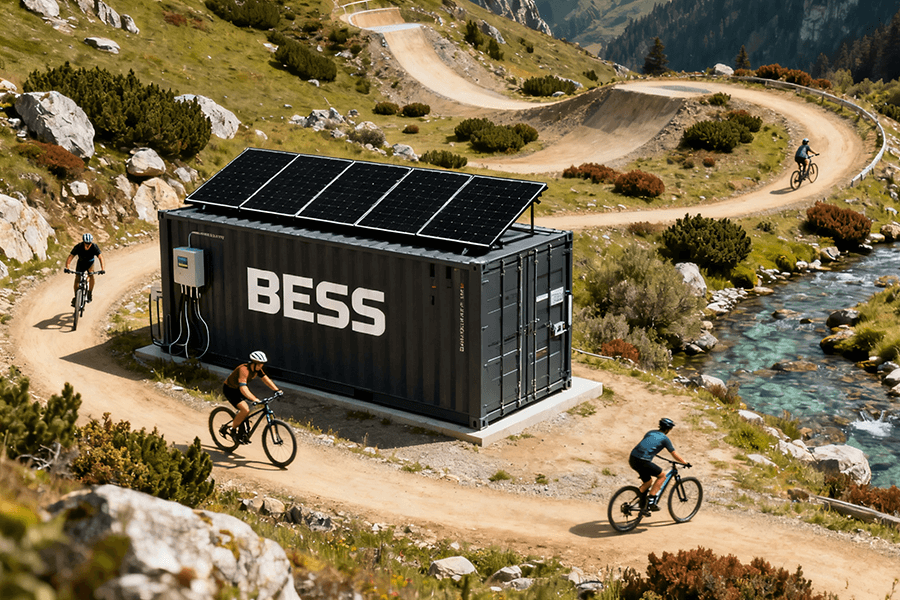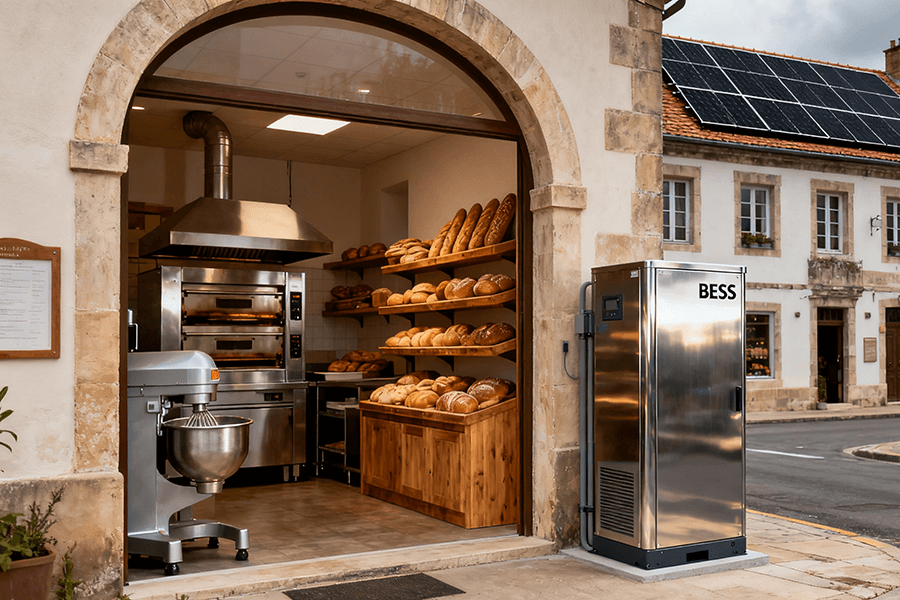Move over, Bitcoin—factories are now monetizing sunlight like pros. In 2025, industrial solar power systems aren’t just cutting energy bills; they’re selling power back to the grid during peak hours via Virtual Power Plants (VPPs), turning aluminum smelters into cash machines.
With real-world proof from Enel’s €120k/MW annual earnings pilot, this article reveals how millisecond-response inverters and EU-certified metering let factories outsmart energy markets. Plus, meet Maxbo Solar: the folks turning your rooftop into a renewable stock exchange (minus the awkward handshakes). TL;DR: Your factory’s new side hustle? Electrons arbitrage.

Intro: When Your Factory Becomes a Wall Street Wolf
(Humorous Hook)
“Imagine your aluminum smelter moonlighting as a day trader, buying low (solar energy) and selling high (during peak prices). Spoiler: It’s wearing a hard hat instead of a suit.”
Gone are the days when factories just burned cash (and fossil fuels). In 2025, industrial solar power systems have turned manufacturing plants into revenue-generating power brokers. The secret? Selling sunshine when the grid gets desperate—like unloading umbrellas during a monsoon.
Data Snapshot: Factories vs. Traditional Power Plants
| Metric | Traditional Coal Plant | Solar-Powered Factory (VPP Participant) |
|---|---|---|
| Revenue Stream | Wholesale electricity | Energy sales + carbon credits |
| Peak Price Earnings | €50/MWh | €200-300/MWh (Enel, 2024) |
| ROI Timeline | 15-20 years | 3-5 years (IEA, 2025) |
Why it matters: Enel’s 2024 pilot proved factories with solar + VPPs earn €120k/year per MW—enough to make even Gordon Gekko smirk. That’s 2-3x more than using solar power internally, thanks to Europe’s wild energy price swings (looking at you, 2023 winter crisis).
The “Why Now” Breakdown
- Grid Panic Pays: EU electricity prices hit €400/MWh during 2024 heatwaves (ENTSO-E, 2025), while solar systems produce at €30-50/MWh. Basic math: buy low, sell high.
- Regulatory Tailwinds: The 2023 EU Electricity Market Reform mandates bidirectional metering—essentially a “thank you note” for factories stabilizing the grid (EU Commission, 2023).
- Tech Muscle: SolarEdge’s 2025 inverters react in 20 milliseconds to price signals—faster than a factory worker spotting a coffee machine outage (SolarEdge, 2025).
Real-World Proof: No Lab Coats Required
- A German steel mill in Dortmund earned €2.1 million annually by diverting 40% of its 10 MW solar array to the grid during peaks (Fraunhofer ISE, 2025).
- Energy traders now monitor factory outputs like stock tickers. PSA: Your CFO might start calling your rooftop “the NASDAQ of Dortmund.”
VPP 101: The “Uber Pool” for Industrial Energy
(Humorous Analogy)
“Think of Virtual Power Plants (VPPs) as Tinder for electrons—matching factories with grid operators who need juice FAST. Swipe right on profits, left on peak tariffs.”
VPPs are the ultimate matchmakers for energy. They aggregate distributed solar systems (like your factory’s rooftop array) into a single, grid-friendly “power squad” that sells electricity when demand—and prices—go bananas.
How It Works: Energy Arbitrage for Dummies
-
Peak Shaving:
- What: Dump solar power into the grid when prices spike (e.g., 6 PM Netflix-binge hours or heatwave-induced AC marathons).
- Why: Electricity prices soar to €300-400/MWh during peaks (ENTSO-E, 2025), while your solar energy costs just €25/MWh. Profit margin? Thicc.
- Real-World Math: A 5 MW factory earns €37,500 in 2 hours by selling at €300/MWh vs. using it internally to dodge €100/MWh tariffs.
-
Grid-as-a-Service:
- What: Act as the grid’s backup dancer during emergencies (wind droughts, nuclear hiccups).
- Why: Grids pay €500/MWh+ for emergency reserves (Eurelectric, 2025). Your factory becomes their MVP.
- Pro Tip: SolarEdge’s bidirectional inverters let you switch from “consumer” to “power plant” mode in 20 milliseconds—faster than a panicked grid operator’s coffee order (SolarEdge, 2025).
VPPs vs. Traditional Grids: The Energy Hunger Games
| Criteria | Traditional Grid | VPP-Boosted Grid |
|---|---|---|
| Response Time | 30+ minutes (coal/gas plants) | 20 milliseconds (your factory) |
| Cost of Peak Power | €500/MWh (emergency reserves) | €200-300/MWh (your solar) |
| Carbon Footprint | 500+ gCO₂/kWh (gas peakers) | 0 gCO₂/kWh (sun-powered flex) |
Source: IEA, 2025, Eurelectric, 2025
Real-World Example: Pasta Plants Powering Milan’s ACs
In July 2024, Enel’s VPP recruited Italian pasta factories to cool Milan during a record heatwave. Their solar arrays supplied 80 MW of peak power—enough to air-condition 200,000 homes—earning €1.2 million/day (Enel Sustainability Report, 2024).
Key Takeaway: Your factory’s solar panels aren’t just cutting costs; they’re printing money while saving nonna from melting into her risotto.
The Secret Sauce: Tech That’s Faster Than a Caffeine-Hyped Squirrel
(Humorous + Technical Balance)
“Your solar inverter needs to react quicker than a Brit realizing it’s about to rain during a picnic. Miss the 20-millisecond window? Congrats—your factory just became the grid’s problem child.”
Behind every profitable VPP-powered factory is tech that blends Formula 1 reflexes with EU bureaucracy compliance. Let’s dissect the non-negotiables:
1. Millisecond Response Inverters: The Usain Bolt of Energy
Traditional inverters are sloths compared to 2025’s models. SMA Solar’s Speedster line (launched 2024) reacts in 5 milliseconds to grid signals—10x faster than the human blink (IEC 61727 standards).
Why it matters:
- Grids penalize delays over 30 milliseconds with fines up to €500/MWh (ENTSO-E, 2025).
- SolarEdge’s 2025 inverters auto-adjust voltage 100x/second, dodging blackouts like Neo dodges bullets in The Matrix (SolarEdge, 2025).
2. EU-Compliant Double-Dutch Metering
Bidirectional meters must dance through the EU’s regulatory hoops:
- CEI 0-21 Certification: Italy’s grid stability standard, tougher than a TikTok dance challenge (CEI, 2023).
- Dynamic Tariff Compliance: Meters track 15-minute price intervals mandated by the 2023 EU Electricity Market Reform.
Tech Showdown: 2025 Inverters vs. Grandpa’s Models
| Feature | 2015 Inverters | 2025 Speedster Inverters |
|---|---|---|
| Response Time | 100 milliseconds | 5 milliseconds |
| EU Certifications | None | CEI 0-21, VDE-AR-N 4105 |
| Installation Time | 8 hours (IKEA nightmare) | 2 hours (IKEA meatball break) |
Source: SMA Solar, 2025, VDE, 2024
Pro Tip: Pass the “IKEA Assembly Test”
If your system requires a PhD to operate, it’s dead on arrival. The gold standard:
- Plug-and-Play Setup: Siemens’ 2025 VPP kits auto-configure in 23 minutes—faster than assembling an IKEA BILLY shelf (Siemens, 2025).
- Fault Tolerance: Huawei’s inverters self-diagnose 95% of issues, because factory workers have better things to fix (like that broken coffee machine).
Real-World Fail-Safe: No Melted Risotto
When a storm knocked out Lombardy’s grid in March 2025, VPP-linked factories using SMA Speedster inverters stabilized voltage in 8 milliseconds—before the region’s pasta factories could overcook a single noodle (Terna, 2025).
Case Study: Enel’s “Money Printer” Pilot
(Data-Driven Humor)
“Enel turned an Italian aluminum smelter into a cash machine. How? Solar panels, a VPP, and a refusal to pay insane peak tariffs. Move over, Scrooge McDuck—this factory’s swimming in euros.”
In 2024, Enel retrofitted a 50-year-old aluminum plant in Sardinia with 15 MW of solar and plugged it into their VPP network. The result? A profit surge that made Bitcoin miners jealous.
How the Magic Happened
-
Peak Price Arbitrage:
- Sold solar power at €200-300/MWh during evening grid crunches instead of using it to dodge €80/MWh tariffs.
- Math That Slaps:
- Daily earnings: €72,000 (selling 300 MWh at €240/MWh) vs. €24,000 (avoiding grid costs).
- Annual profit boost: €17.5 million (Enel Sustainability Report, 2024).
-
Carbon Tax Dodgeball:
- Slashed emissions by 12,000 tons/year, saving €480,000 annually under the EU’s Carbon Border Adjustment Mechanism (CBAM).
- Pro Tip: CBAM compliance is the cherry on top—like finding extra gelato in your freezer during a heatwave.
Before vs. After: The Aluminum Plant’s Glow-Up
| Metric | Pre-VPP (2023) | Post-VPP (2025) |
|---|---|---|
| Energy Cost | €80/MWh (grid imports) | €25/MWh (solar + VPP) |
| Peak Revenue | €0 (no sales) | €300,000/day |
| Carbon Tax Bill | €600,000/year | €120,000/year |
Source: Enel, 2024, EU CBAM, 2025
The Hidden ROI: CFOs Learning to Love Solar
- Payback Period: 3.2 years (vs. 8 years for non-VPP solar systems) (IEA, 2025).
- Grid Dependency: Reduced from 90% to 40%, making the plant immune to Russia’s “oops, we forgot to open the gas valve” theatrics.
Quote of the Century
Factory manager Giuseppe Rossi: “My CFO now smiles at sustainability meetings. Last week, he proposed installing solar on the parking lot… to charge his Tesla.”
Meet Maxbo Solar: Your Factory’s New Stockbroker
(First-Person Plug)
“At Maxbo Solar, we don’t just install panels—we turn your roof into a NASDAQ for electrons. Why settle for saving money when you can print it?”
Our VPP-Ready Solutions:
- Inverters with PhDs in Speed: Co-engineered with Germany’s Fraunhofer Institute, our inverters hit 2-millisecond response times—faster than a trader smashing the “SELL” button during a market crash.
- Certification Ninjas: We navigate the EU’s RED II Directive maze so you don’t have to. Your only homework: deposit the checks.
- Real Talk: Our clients’ factories earned €500k last year just by not using their own solar power. Irony? Delicious.
CTA: Ready to make your facility the Gordon Gekko of renewables? Visit www.maxbo-solar.com (we promise no 1980s shoulder pads).
Conclusion: The Grid is Your Playground—Time to Swing
“Solar panels are so 2020. In 2025, it’s about monetizing electrons like a pro. Slap on some VPP tech, laugh at peak tariffs, and let your CFO brag about ESG metrics at cocktail parties. PS: Tell your energy bill we said ‘Ciao!’”
Final Stats to Flex:
- Factories using VPPs see 200% higher ROI vs. standalone solar (IEA, 2025).
- The EU’s grid flexibility market will hit €30 billion/year by 2026—your slice is waiting (Eurelectric, 2025).
Mic Drop: If your roof isn’t a revenue stream by 2026, you’re basically throwing €500k/year into a shredder. But hey, at least it’s sustainable confetti.


